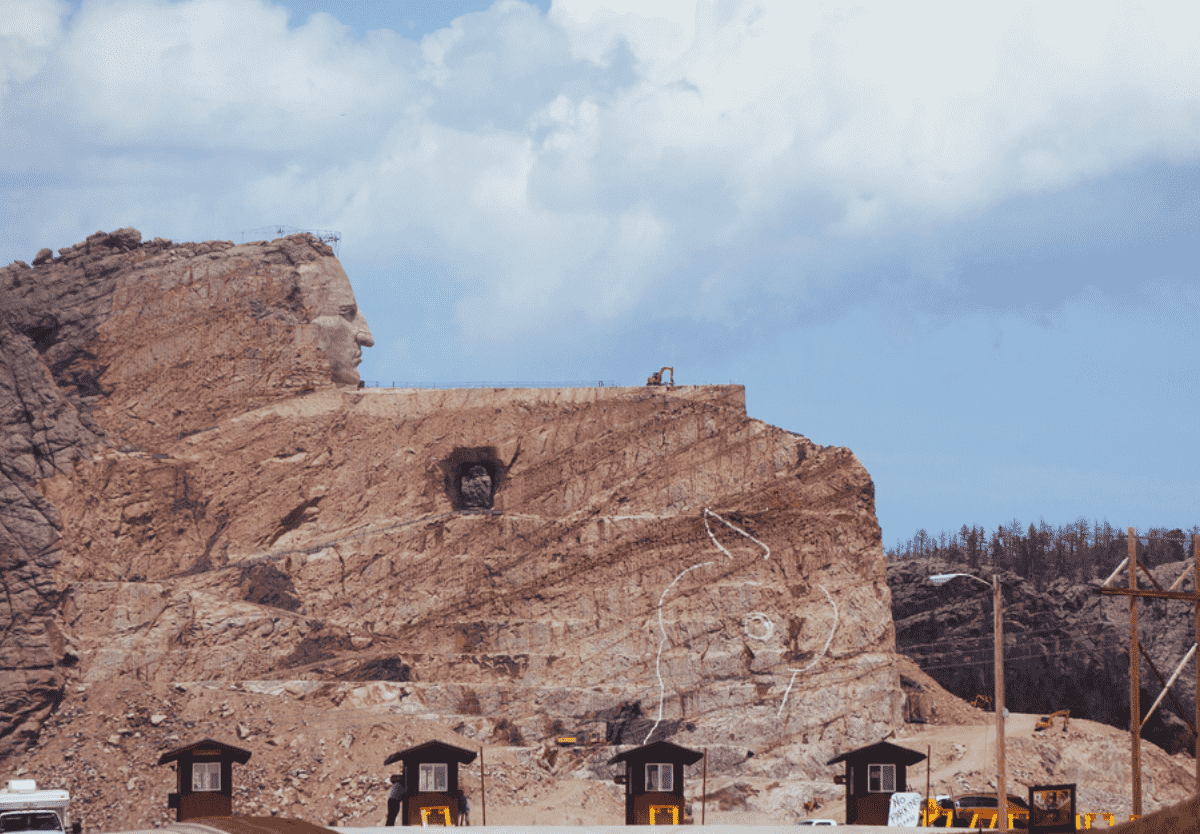Monument of Native American “Crazy Horse” Is Slowly Taking Shape
The Native American statue that has already been over 70 years in the making
Travel

You’d think that the world’s largest statue would be something glamorous and well known around the world, right? Turns out that the world has yet to see the sculpture of one of the most iconic and revered Native Americans of all time – Crazy Horse.
Started well over 70 years ago, the monument dedicated is situated in South Dakota’s Black Hills, and once completed, it will be larger than the featured four U.S presidents on Mount Rushmore.
So who was Crazy Horse?
Crazy Horse was the war leader of the Lakota tribe in the 19th century. In an effort to preserve the traditional way of life of the Lakota people, he led the opposition against the then federal government of the United States. In the Battle of Little Bighorn, it was Crazy Horse who killed General Custer and his legacy is so strong that he was honored by the U.S. Postal Service in 1982 with a postage stamp.
The Crew map seamlines on the Face as they prepare to carve on Crazy Horse’s Head. Also, new top layer of gravel is placed to provide greater traction for Carvers & equipment for winter. Gravel was placed after placement of dowels & grouting of seamlines on the Left Arm.
— Crazy Horse Memorial (@CrazyHorseMem)
The memorial statue of Crazy Horse will stand as a landmark representing Native Americans and their rich history. As there are no existing photographs of Crazy Horse, the sculpture is more symbolic to the Native American heritage than a replica of his features.
The Vision Carved in Stone.
In 1939, the chief of the Lakota tribe – Standing Bear, contacted Polish-American sculptor Korczak Ziolkowski, who is credited for his work on Mount Rushmore. Standing Bear wanted a monument carved in memory of his forefather, freedom fighter Crazy Horse. In his words, “My fellow chiefs and I would like the white man to know that the red man has great heroes also.”
After writing to the US Government with an offer of 364 hectares of land, Standing Bear got the land grant and permit for the project to commence on Thunderhead Mountains. Inaugurated on June 3, 1948, five survivors of the Battle of Little Bighorn were present at the memorial ceremony.
A view from the top from the Volksmarch.
— Crazy Horse Memorial (@CrazyHorseMem)
To make Standing Bear’s dream a reality, Korczak Ziółkowski spent most of his time learning about Crazy Horse and the Lakota tribe. The more he discovered, the more the project consumed him. Eventually, this vision expanded beyond just a giant monument. His plan was to build a sprawling complex underneath the monument itself featuring a Native American museum and various cultural activities.
A medical training center and university are also in the pipeline, but that will come at a much later stage. Even though the statue is far from being completed, orientation and communications setup have been erected at the site. Visitors can learn about Native Americans; the history of the three main tribes, the life and times of Crazy Horse, and the work of sculptor Korczak Ziolkowski.
Unfortunately, Ziolkowski passed away in 1982, without completing his project. His family honors his last wish and have carried the mission forward since then.
After 50 years, Crazy Horse’s head in stone was unveiled in 1998. It stands 87 feet high with eyes 17 feet apart and the rest of the head 58 feet wide.
And now at the monument to Crazy Horse!
— Eddie Izzard (@eddieizzard)
What’s the hold up?
The statue is far from finished. One of the reasons is that most of the sculpting is done in winter. Another major obstacle is funding. Interestingly, Ziolkowski refused to accept government funding or any salary for this project. The Crazy Horse Memorial is funded privately by fundraisers, donations, and ticket fares to the museum. Luckily, with modern fundraising platforms like GoFundMe, work has picked up at a steady pace.
Terry DeRouchy, who works at the site, has predicted that Crazy Horse’s shoulder, arm, hand, and hairline should be done within the coming 15 years.
Still, the wait for the Crazy Horse Monument to be completed rumbles on, but in the Black Hills of South Dakota his presence grows with each passing day and there is so much goodwill behind the project that it’s sure to be finished eventually.